.
Tommy Bartlett's Pancake and Pizza Restaurant, Lake Delton, Wisconsin. Photographer's general caption: "Near the town of Wisconsin Dells the Wisconsin River channels through deep, soft sandstone cliffs, cutting rock into fantastic shapes. These natural splendors have given rise to a booming tourist industry. People come in droves, often in campers and trailers. Boat trips, shops, bars, and diversions of every kind vie for patronage in an amusement complex extending 2 or 3 miles beyond the town.": photo by Jonas Dovydenas (1939-) for the Environmental Protection Agency Project DOCUMERICA, September 1973 (US National Archives)
Yellow Olds with 1970 Iowa plates so bilious you put me in mind of adventure
seeking back in the lost time
when all it took to inspire the heart with a prolonged rush of expectation
was the idea of a deranged weekend at the Dells

Near the town of Wisconsin Dells the Wisconsin River channels through deep, soft sandstone cliffs, cutting rock into fantastic shapes. These natural splendors have given rise to a booming tourist industry. People come in droves, often in campers and trailers. Boat trips, shops, bars, and diversions of every kind vie for patronage in an amusement complex extending 2 or 3 miles beyond the town: photo by Jonas Dovydenas (1939-) for the Environmental Protection Agency Project DOCUMERICA, September 1973 (US National Archives)
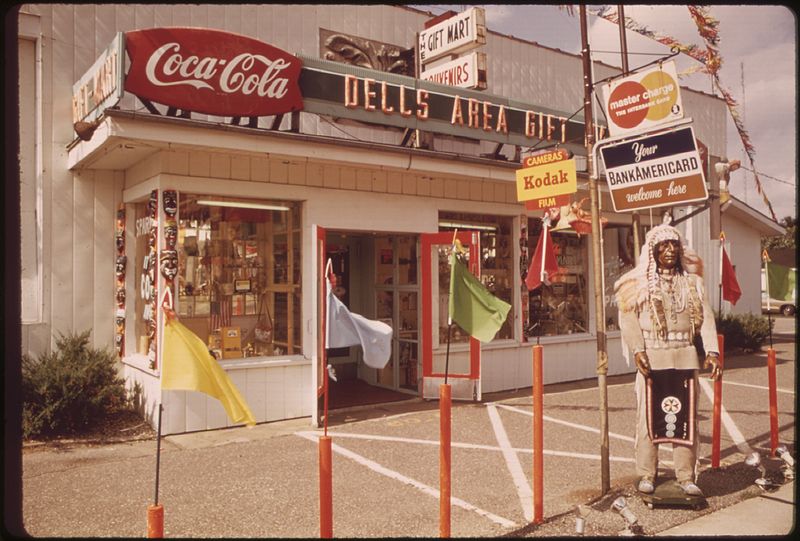
Near the town of Wisconsin Dells the Wisconsin River channels through deep, soft sandstone cliffs, cutting rock into fantastic shapes. These natural splendors have given rise to a booming tourist industry. People come in droves, often in campers and trailers. Boat trips, shops, bars, and diversions of every kind vie for patronage in an amusement complex extending 2 or 3 miles beyond the town: photo by Jonas Dovydenas (1939-) for the Environmental Protection Agency Project DOCUMERICA, September 1973 (US National Archives)
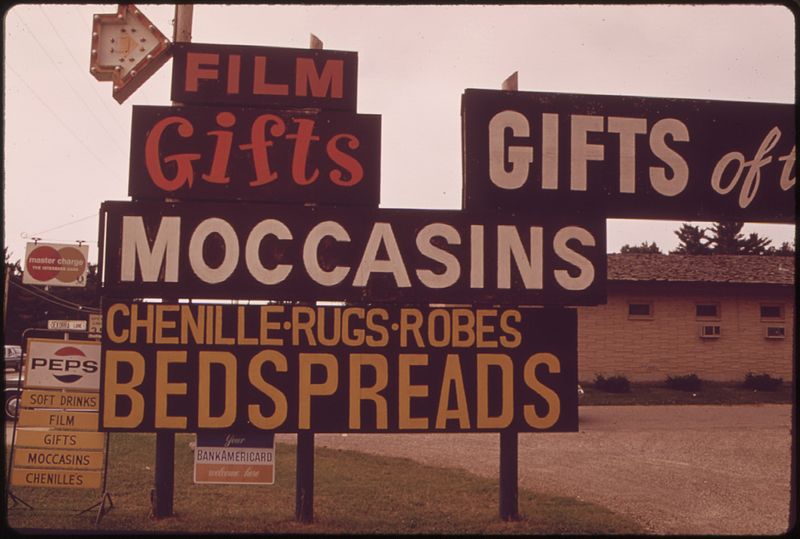
Near the town of Wisconsin Dells the Wisconsin River channels through deep, soft sandstone cliffs, cutting rock into fantastic shapes. These natural splendors have given rise to a booming tourist industry. People come in droves, often in campers and trailers. Boat trips, shops, bars, and diversions of every kind vie for patronage in an amusement complex extending 2 or 3 miles beyond the town: photo by Jonas Dovydenas (1939-) for the Environmental Protection Agency Project DOCUMERICA, September 1973 (US National Archives)
Near the town of Wisconsin Dells the Wisconsin River channels through deep, soft sandstone cliffs, cutting rock into fantastic shapes. These natural splendors have given rise to a booming tourist industry. People come in droves, often in campers and trailers. Boat trips, shops, bars, and diversions of every kind vie for patronage in an amusement complex extending 2 or 3 miles beyond the town: photo by Jonas Dovydenas (1939-) for the Environmental Protection Agency Project DOCUMERICA, September 1973 (US National Archives)
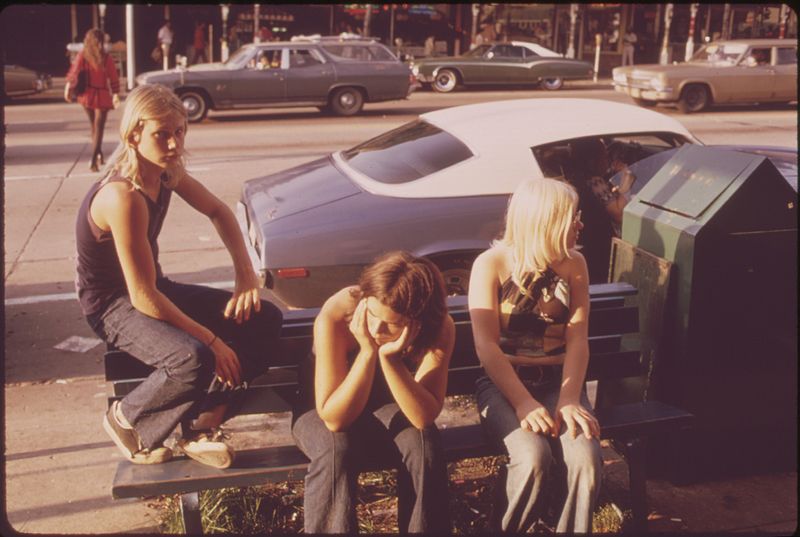
Near the town of Wisconsin Dells the Wisconsin River channels through deep, soft sandstone cliffs, cutting rock into fantastic shapes. These natural splendors have given rise to a booming tourist industry. People come in droves, often in campers and trailers. Boat trips, shops, bars, and diversions of every kind vie for patronage in an amusement complex extending 2 or 3 miles beyond the town: photo by Jonas Dovydenas (1939-) for the Environmental Protection Agency Project DOCUMERICA, September 1973 (US National Archives)

Near the town of Wisconsin Dells the Wisconsin River channels through deep, soft sandstone cliffs, cutting rock into fantastic shapes. These natural splendors have given rise to a booming tourist industry. People come in droves, often in campers and trailers. Boat trips, shops, bars, and diversions of every kind vie for patronage in an amusement complex extending 2 or 3 miles beyond the town: photo by Jonas Dovydenas (1939-) for the Environmental Protection Agency Project DOCUMERICA, September 1973 (US National Archives)

Near the town of Wisconsin Dells the Wisconsin River channels through deep, soft sandstone cliffs, cutting rock into fantastic shapes. These natural splendors have given rise to a booming tourist industry. People come in droves, often in campers and trailers. Boat trips, shops, bars, and diversions of every kind vie for patronage in an amusement complex extending 2 or 3 miles beyond the town: photo by Jonas Dovydenas (1939-) for the Environmental Protection Agency Project DOCUMERICA, September 1973 (US National Archives)

Near the town of Wisconsin Dells the Wisconsin River channels through deep, soft sandstone cliffs, cutting rock into fantastic shapes. These natural splendors have given rise to a booming tourist industry. People come in droves, often in campers and trailers. Boat trips, shops, bars, and diversions of every kind vie for patronage in an amusement complex extending 2 or 3 miles beyond the town: photo by Jonas Dovydenas (1939-) for the Environmental Protection Agency Project DOCUMERICA, September 1973 (US National Archives)
Near the town of Wisconsin Dells the Wisconsin River channels through deep, soft sandstone cliffs, cutting rock into fantastic shapes. These natural splendors have given rise to a booming tourist industry. People come in droves, often in campers and trailers. Boat trips, shops, bars, and diversions of every kind vie for patronage in an amusement complex extending 2 or 3 miles beyond the town: photo by Jonas Dovydenas (1939-) for the Environmental Protection Agency Project DOCUMERICA, September 1973 (US National Archives)
Boating on the Wisconsin River at Wisconsin Dells: photo by Jonas Dovydenas (1939-) for the Environmental Protection Agency Project DOCUMERICA, September 1973 (US National Archives)

Boating on the Wisconsin River at Wisconsin Dells: photo by Jonas Dovydenas (1939-) for the Environmental Protection Agency Project DOCUMERICA, September 1973 (US National Archives)
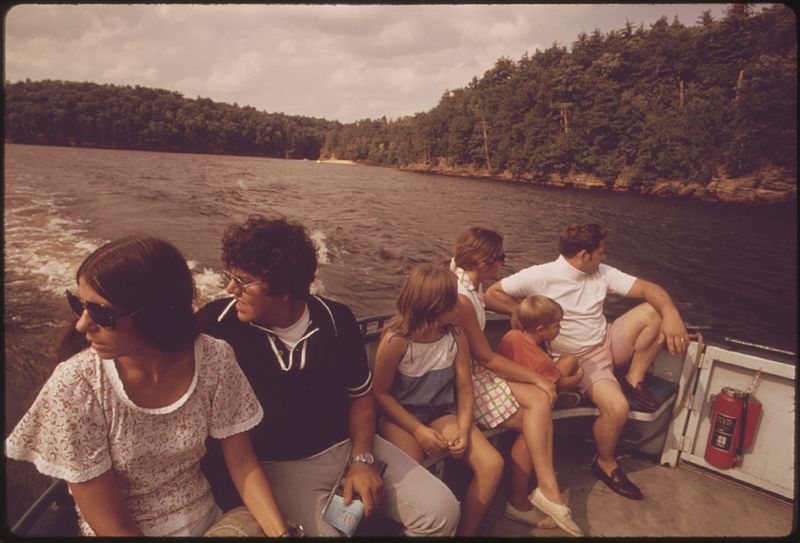
Near the town of Wisconsin Dells the Wisconsin River channels through deep, soft sandstone cliffs, cutting rock into fantastic shapes. These natural splendors have given rise to a booming tourist industry. People come in droves, often in campers and trailers. Boat trips, shops, bars, and diversions of every kind vie for patronage in an amusement complex extending 2 or 3 miles beyond the town: photo by Jonas Dovydenas (1939-) for the Environmental Protection Agency Project DOCUMERICA, September 1973 (US National Archives)

Near the town of Wisconsin Dells the Wisconsin River channels through deep, soft sandstone cliffs, cutting rock into fantastic shapes. These natural splendors have given rise to a booming tourist industry. People come in droves, often in campers and trailers. Boat trips, shops, bars, and diversions of every kind vie for patronage in an amusement complex extending 2 or 3 miles beyond the town: photo by Jonas Dovydenas (1939-) for the Environmental Protection Agency Project DOCUMERICA, September 1973 (US National Archives)
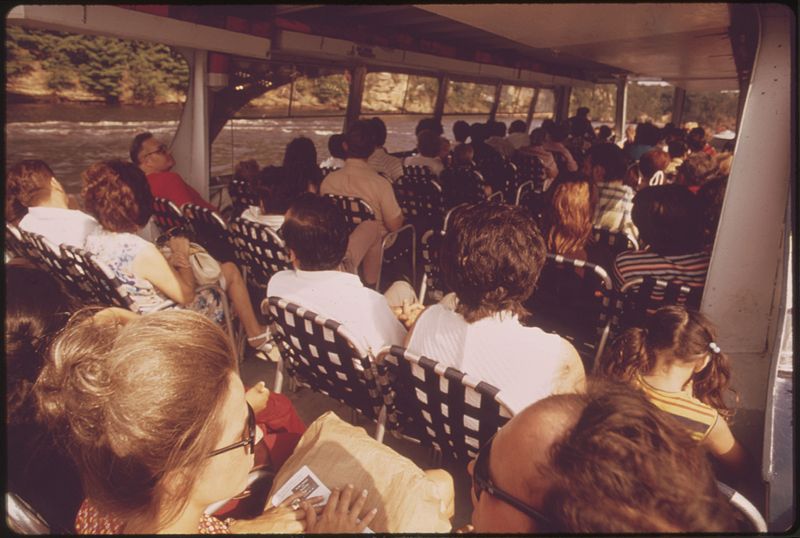
Near the town of Wisconsin Dells the Wisconsin River channels through deep, soft sandstone cliffs, cutting rock into fantastic shapes. These natural splendors have given rise to a booming tourist industry. People come in droves, often in campers and trailers. Boat trips, shops, bars, and diversions of every kind vie for patronage in an amusement complex extending 2 or 3 miles beyond the town: photo by Jonas Dovydenas (1939-) for the Environmental Protection Agency Project DOCUMERICA, September 1973 (US National Archives)

Near the town of Wisconsin Dells the Wisconsin River channels through deep, soft sandstone cliffs, cutting rock into fantastic shapes. These natural splendors have given rise to a booming tourist industry. People come in droves, often in campers and trailers. Boat trips, shops, bars, and diversions of every kind vie for patronage in an amusement complex extending 2 or 3 miles beyond the town: photo by Jonas Dovydenas (1939-) for the Environmental Protection Agency Project DOCUMERICA, September 1973 (US National Archives)

Near the town of Wisconsin Dells the Wisconsin River channels through deep, soft sandstone cliffs, cutting rock into fantastic shapes. These natural splendors have given rise to a booming tourist industry. People come in droves, often in campers and trailers. Boat trips, shops, bars, and diversions of every kind vie for patronage in an amusement complex extending 2 or 3 miles beyond the town: photo by Jonas Dovydenas (1939-) for the Environmental Protection Agency Project DOCUMERICA, September 1973 (US National Archives)
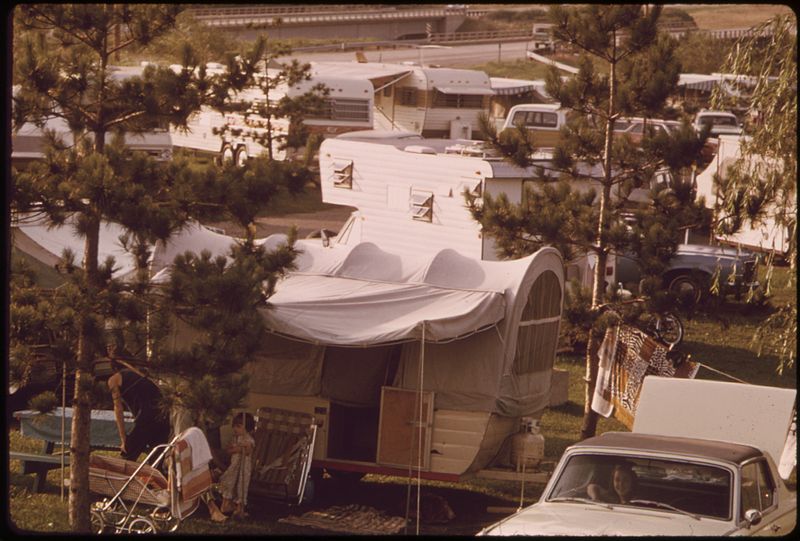
Near the town of Wisconsin Dells the Wisconsin River channels through deep, soft sandstone cliffs, cutting rock into fantastic shapes. These natural splendors have given rise to a booming tourist industry. People come in droves, often in campers and trailers. Boat trips, shops, bars, and diversions of every kind vie for patronage in an amusement complex extending 2 or 3 miles beyond the town: photo by Jonas Dovydenas (1939-) for the Environmental Protection Agency Project DOCUMERICA, September 1973 (US National Archives)

Youngsters fishing at Wisconsin Dells on the Wisconsin River: photo by Jonas Dovydenas (1939-) for the Environmental Protection Agency Project DOCUMERICA, September 1973 (US National Archives)
Canoeing on the Wisconsin River at Wisconsin Dells: photo by Jonas Dovydenas (1939-) for the Environmental Protection Agency Project DOCUMERICA, September 1973 (US National Archives)
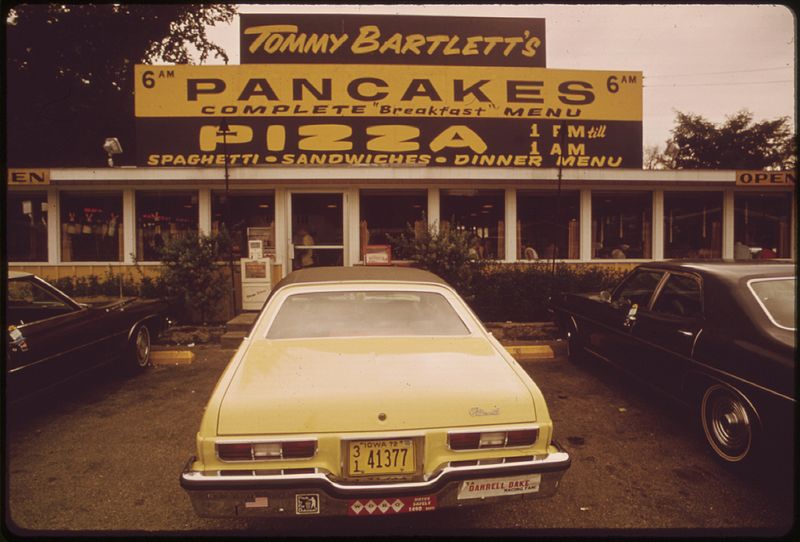
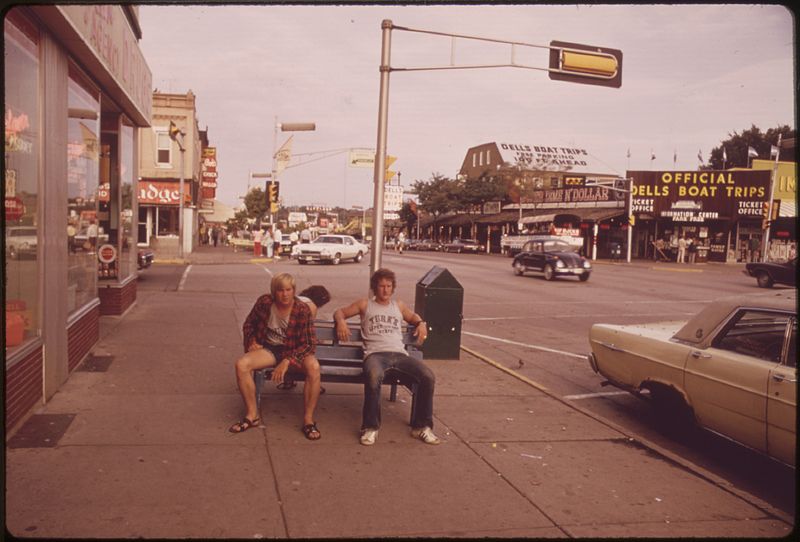
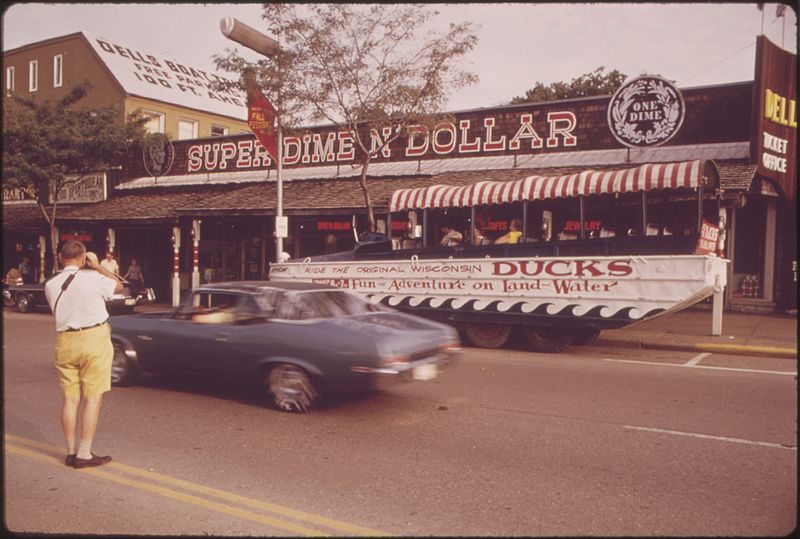

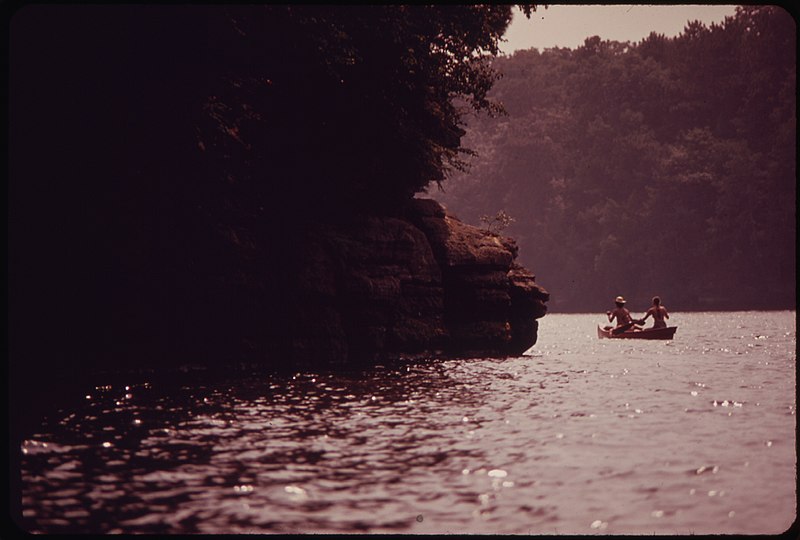



11 comments:
To a young person born and raised in the American Midwest, far from oceans or civilizations, a place like the Dells could almost seem as exotic as... what? Biarritz?
My parents honeymooned there.
Later on... childhood visits, rides on the duck boats, attendance at the Hiawatha pageants... and then, the abject "adventure seeking" (never in so impressive a vehicle as that seen in the top shot here, though I did for a while cruise to these ersatz wonderlands of the North in a gunmetal grey '54 Olds...).
More Dells, yet:
Leap of Faith (Stand Rock)
My Father on the Riverside & Great Northern (Little Railway, Dells, Wisconsin)
About this photographer:
"Born in Lithuania in 1939, Jonas Dovydenas was forced to flee the country with his family in 1944 to escape the Soviet occupation. After spending five years in Germany, they emigrated to the United States. Dovydenas completed a BA in English literature at Brown University and went on to study photography at the Rhode Island School of Design and the Institute of Design at the Illinois Institute of Technology in Chicago. He began working as a freelance photographer in 1968 and through the 1970s he lived in Chicago, where he became involved in photographing the city's ethnic communities. During this period Dovydenas also traveled to other parts of the United States, photographing with a straightforward style and an emphasis on the act of seeing and showing rather than any sort of visual acrobatics. In 1975 Dovydenas released the Faces portfolio — held in MoCP's permanent collection — which gathers fifteen photographs of varied groups of people from five different states. The images portray politicians and softball players in Chicago, churchgoers in Minnesota, ranchers and transients in Nevada, and overnight campers in California, among other people. Without any claim to comprehensiveness, the portfolio suggests a range of lifestyles while emphasizing a common humanity.
"Since the 1970s Dovydenas has expanded his scope internationally. In 1985 he embarked on a twenty-year photographic study in Afghanistan. Making eight trips to the country up through 2005, Dovydenas explores subjects such as freedom, devotion to family, and human expression, during intense periods of conflict and moments of fragile peace. Between 1996 and 2002 he also photographed in his home country of Lithuania, documenting examples of both public and private life. Dovydenas now lives in Lenox, Massachusetts and Vilnius, Lithuania."
Jonas Dovydenas at the Art Institute of Chicago
Could anything be as deranged as tackling tourist bait?
In retrospect, one must admit to being, pretty much, live bait, in that epoch. Though never quite a proper tourist, mind.
The Beer Depot was more likely the point of reference.
I have never been able to sleep a night in a tent, camper, laundromat, or other temporary confining enclosure. Consequently on the Wisconsin expeditions of my fermented-salad years, I rested, if at all, in the car, or in some clump of weeds.
For after all, this was, still, at that point -- some years before Jonas Doydenas's visit -- "wild nature". Almost.
The desecration of the riverine landscape for purposes of "recreation" (turning the Wisconsin River into a stinking boat-freeway) and exploitation of the local Native American traditions (the ubiquitous marketing of "Indian" paraphenalia) are well documented in this critical essay by a photographer seeing the conduct and display spectacle of the American bourgeoisie as exactly what it was -- ugly.
The background on the top picture in this post is perhaps interesting enough to mention in brief.
Tommy Bartlett, impresario extraordinaire, called by some the P.T. Barnum (or by others the Walt Disney) of the Midwest, was a native of Milwaukee who in the Forties became a well known radio announcer in Chicago, on WBBM, the station that aired a lot of the daytime shows my mother enjoyed. In 1949, at the Chicago Railroad Fair, Tommy saw a water skiing show on Lake Michigan. Soon he had devised and put into execution the Tommy Bartlett Water Ski & Jumping Boat Thrill Show. The show went "on the road". At Wisconsin Dells, the paying crowds were wowed, and the Chamber of Commerce asked Tommy to keep the show in town permanently. He established a base there, while continung to expand the franchise internationally. More or less singlehandedly he turned water skiing from a fun-show curiosity to something like a popular sport -- and a very lucrative one at that, not least, of course, for Tommy and his spinoff enterprises. Spectaculars featuring "dancing water", jumping boats, night shows, Polynesian dancers, show ski jumping, and skydivers... all these are part of the same soggy cultural legacy.
The location seen here in its incarnation as the Pancake & Pizza Restaurant soon became Tommy Bartlett's Robot World & Exploratory. Robot displays and so on... which over the years morphed in their turn into "interactive science" exhibits. The business still flourishes, as Tommy Bartlett Exploratory.
In 1996, two years before his death, Tommy Bartlett made a bid on one of the spare core modules of the Russian Space Station Mir. The numbers were right. The space junk is now on display at the Exploratory.
Meanwhile Tommy's water ski brainchild has exploded into worldwide megabiz. The touring shows have been attended by over fifty million humans worldwide. Tommy Bartlett water-ski'd exactly once in his life, on his seventieth birthday in 1984.
His memory will live on unto time immemorial carved in the history and cultural landscape of the Wisconsin River.
Tommy Bartlett's Under Dog: Thrills and Chills and Whacko Water-Walking at Camp Bartlett, Wisconsin Dells
feels sweetly nostalgic... even to a crow who doesn't belong to this land...
I take the Wisconsin photohistory as a near cognate of Michigan, my Michigan's. It's more terrible than wonderful, but wonderful, too, to recall certain bits of childhood in the Midwest. The grownup photos and your background commentary on Tommy Bartlett, etc. - provocative. Thanks, Tom.
'the same soggy cultural legacy ...'
Someone should write a social/cultural history of the urge to get our feet just a bit wet, preferably (forgive the lurch onto English waters) with piped light classics and cream teas freely available, secure in the knowledge that we'll be home for the early evening soaps. One source would be Jerome K. Jerome's Three Men in a Boat,I suppose, but I suspect that's only comprehensible to chaps wearing striped blazers.
Nooshin, I'm afraid that in this case you haven't been missing much. No crow on earth deserves to be made to ride on a duck boat.
Nick, that's right. Terrible wonderful. Though when, with these photos as a prompt, I look back -- or more like, look as if for the first time -- I fear the wonderful is trumped by the terrible.
Barry, indeed -- but at this stage, a cream tea would probably do a bit better for me than pancake and pizza washed down by package liquors from Bob's.
(At least Bob wasn't a Bartlett... though then again...)
ha ha ha!
talk about dear teacher's sense of humor! terrific!
and crows can grin cheek to cheek!
Back in the mid 90's my late son and I stayed at a B&B farm near the Dells.
Strange fascinating brown depositions on the opposite bank. I don't know the geology of this.
My parents all came from Wisconsin. My father from New London, my mother from Neena (Menasha, where she worked for the Bonta Publishing company--the one that printed all the Arkham House books), and my stepfather, from just north of Madison called Sauk City.
My parents talked like Wisconsonians. People would tell me I sounded the same, though I grew up in California. Good gawd!
Curtis,
Well, those curious sandstone formations along the river, created by glacial movement, were always allegedly "the attraction", though I think the local fame of the place probably owes more to its being a historical focal point for gimcrack barnstormers, entrepreneurs, boomtown snake oil vendors and the like. Every region needs its tourist attraction, after all, and while this was the best the Upper Midwest had to offer, still, I recall it as a cheap, tacky, offensive place, especially the crude marketing of "Indian" paraphernalia. By the time I got to high school it was already a place nobody really went for fun any more. Lake Geneva served much better for that.
I guess I've said a bit about the Tommy Bartlett water-ski-pancake-pizza-exploratorium empire at the Dells. There was also one Mel Flath, an enterprising guy from Milwaukee who picked up an amphibious truck in an impulse buy at a government auction in California (he was out here to make a killing on war surplus trucks at the time). With it he opened an Amphibious Boat Cruise business at the Dells, floating tourists through the sandstone formations. Mel sold the business in 1952 to Jack B. Olson, who ratcheted up the scale of the enterprise by acquiring a whole fleet of decommissioned military WWII amphibious DUKW vehicles -- "duck boats". There ensued the paradigmatic franchising and branding wars over the authenticity of the "Original" as versus the successive waves of arriviste duck boats, some wheeled, some with pontoons, some submerging as small subs, and so on. Later there would be Original Wisconsin Ducks, Aquaducks, Dells Duck Tours, Daffy Dells Ducks, Dells Army Ducks, Original Rubber Duckies and so on.
It all comes back to me now, alas; I can almost feel the gasoline tainted spray splashing against my ancient pale visage and the little webbed wheels grinding away beneath the lap-rug as I laboriously, deep in the wrong phase of the Glaciation, hunt and peck these words, inscribing them not quite forever in the soft weeping underbelly of The Cloud.
Post a Comment